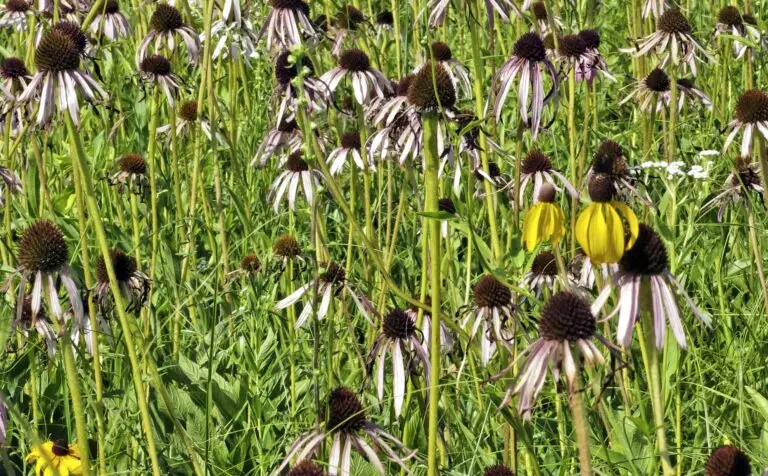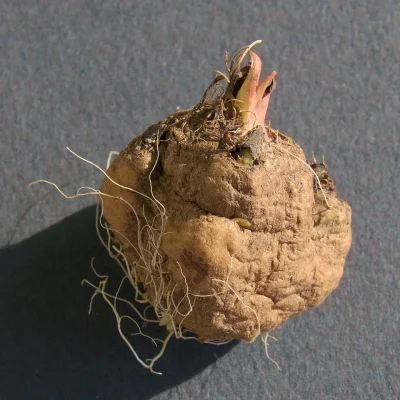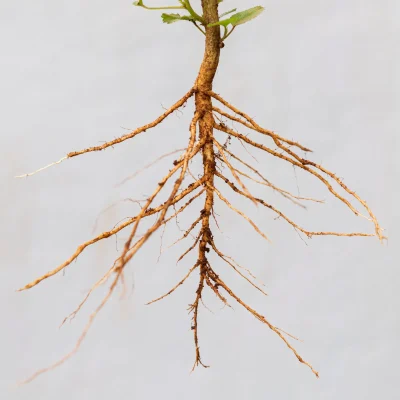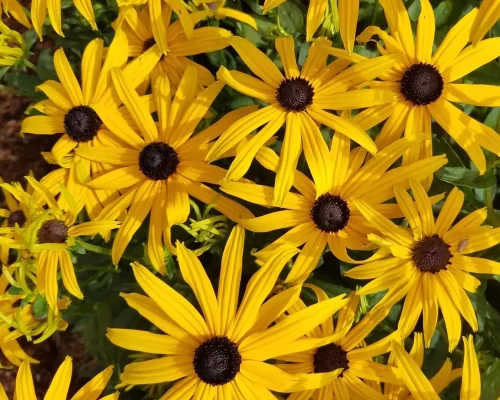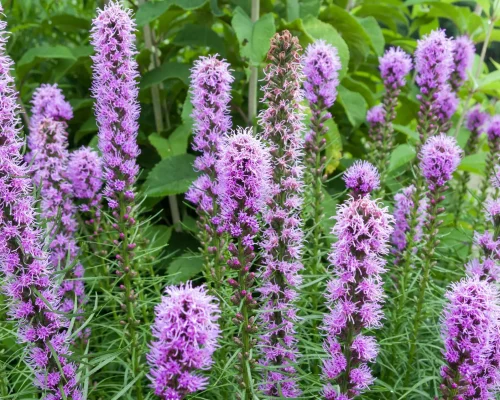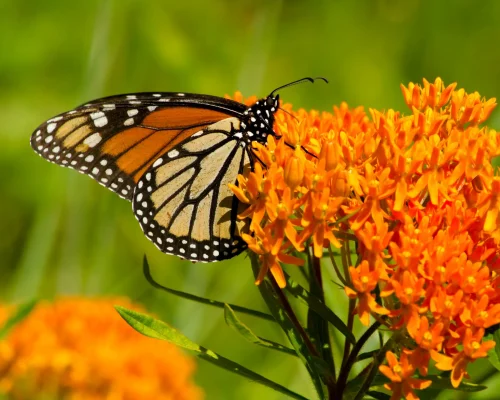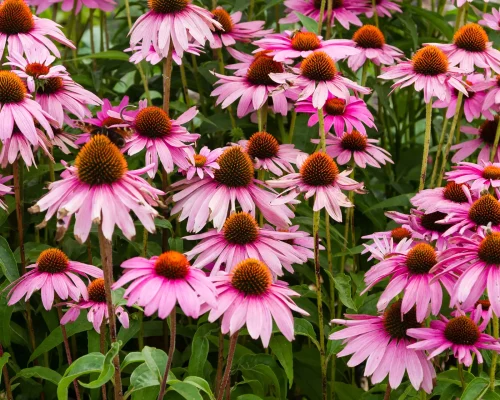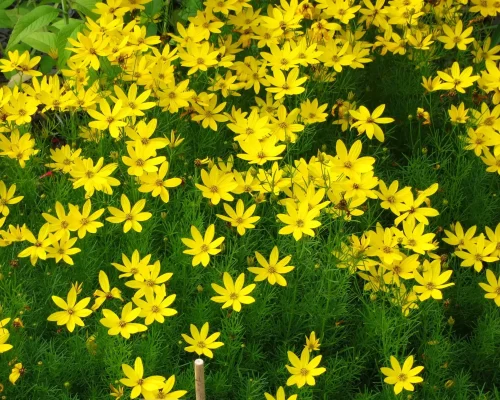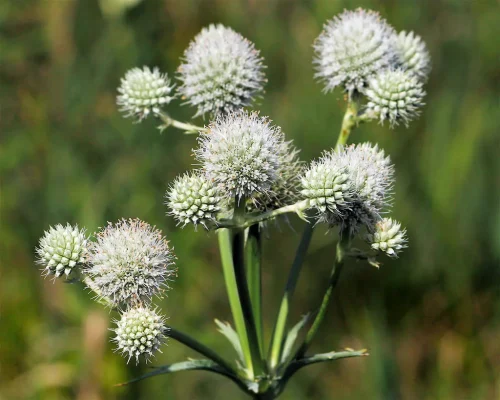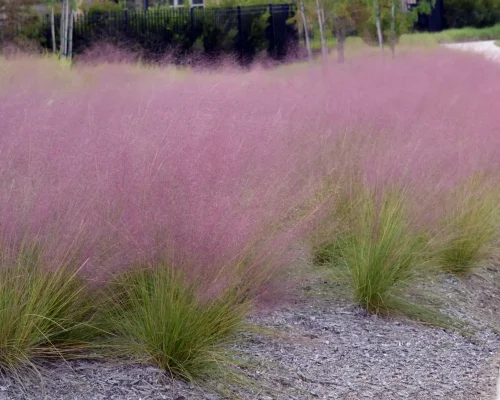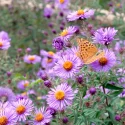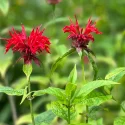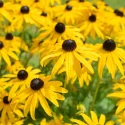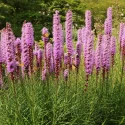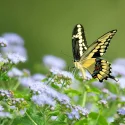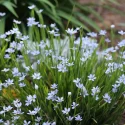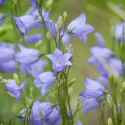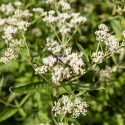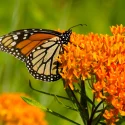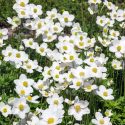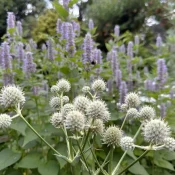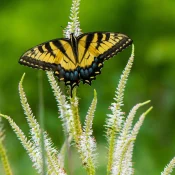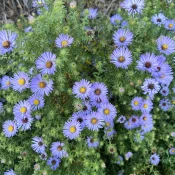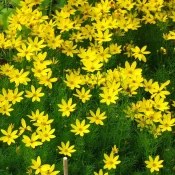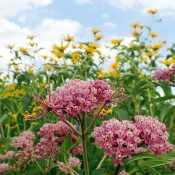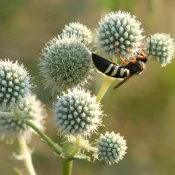What are the best native plants for dry areas?
There are many native plants and flowers that are resilient in dry areas or tolerate naturally occurring droughts. Native plants have thrived in every type of landscape for thousands of years—they have the resiliency to survive in dry areas. If you live east of the Rocky Mountains, here are some native plants to consider, whether you are looking to conserve water or plant a garden in a dry spot.
No matter where you live, water is in the news. Droughts and record rainfalls are changing some environments, including those closest to home: our yards, parks, and communities.
If you’re planting a garden in a dry spot, the best flowers, shrubs, and trees to plant are native plants. A native plant is a plant that has lived in its home area for thousands of years. Their DNA knows the soil, weather, and seasons better than any other plant on the planet. Native plants are the best choice for dealing with droughts or planning water-conserving gardens.
If you live east of the Rockies, the plants on this list are perfect for planting in dry areas. These gorgeous and drought-tolerant plants can happily thrive in almost all Mid-Atlantic, Midwest, Northeast, or Southern gardens.
Before we introduce some options, let’s peek beneath the hood of these plants and answer—
Why are these plants so drought-tolerant?
Plants have millions of incredible, often secret, adaptations that help them thrive globally. For the plants in the Eastern United States that survive dry periods, there are a few recurring special powers that help them survive:
They bring their own water storage
We all know that plants have roots. However, some have evolved to have roots that are hidden water bottles that store water and nutrients during periods of need.
Two types of these water bottle roots are called corms and taproots.
You can understand corms and taproots in 15-seconds:
A corm is a rounded bulb that is often close to the surface that holds water and nutrients.
Native, drought-resistant plants with corms include Blazing Stars.
A taproot is a long root that looks like a carrot—in fact, carrots are taproots!
Native, drought-resistant plants with taproots include most coneflowers, Butterfly Weed, and Rattlesnake Master.
One bummer about taproots: they make it challenging for a plant to move after being planted and established. That long taproot does not like to be disturbed, and if it breaks, sometimes the plant cannot survive.
Let’s briefly mention one other method some plants use for delivering drought tolerance—
Small, thin, or few leaves
Many plants that live in places with proper seasons have an extraordinary amount of work to do in a short amount of time. They have to wake up from dormancy in the winter, sprint over 3-4 months to make leaves, flowers, and/or fruit, and then go back to sleep when the temperatures cool.
One way plants conserve energy and water (which can later be used to withstand drought) is by making fewer, smaller, or thinner leaves. (Leaves are also a way that plants lose water through transpiration, but we’ll save that for another article.)
Coneflowers, Coreopsis, and Black-eyed Susans are among the plants on this list that have evolved drought-friendly leaf strategies.
Now, let’s meet some of these corm, taproot, and specifically leafed options, which are perfect for dry areas.
Best native plants for dry areas
Listed in alphabetical order; follow the links to learn more about each plant.
Black-Eyed Susan
Black-Eyed Susans are drought superstars. These bright flowers can withstand full sun and dry places. In return, they bloom for over a month in the summer.
Blazing Star
Blazing Stars are known for being bright and joyful—even in dry gardens. Their tall stalks are covered in flowers. Plant them in groups of 5 or more and watch the pollinators throw a party.
Butterfly Weed (Milkweed)
Butterfly Weed is a type of milkweed known for its bright orange blooms. These drought-tolerant flowers are also the host plants for monarch butterflies.
Coneflower
Coneflowers offer nine species with knockout flowers that bloom for 6-9 weeks in the summer. They are OK with dry, sunny spots in your garden and easy to plant—even from seed!
Coreopsis (Tickseed)
Coreopsis is great in dry spots (and don’t worry, they don’t attract ticks!) Their tiny flowers cover the plants in the summer, making them a pollinator favorite.
Rattlesnake Master
Yep, that is a real name. Rattlesnake Masters are taproot badasses. They flower for 6+ weeks in the summer and then look like a sculptural garden throughout the fall and winter.
Grasses and Sedges
Did you give an eye roll, thinking, ‘eh? that’s a boring choice.’? Don’t sleep on what native grasses and sedges provide: cinematic beauty and great landscaping contrast when paired with native flowers. Some have root systems that are 2’+!
Plant these once and enjoy for years
An added benefit of all these plants is that almost all are perennials, meaning they will return year after year. (Only Black-Eyed Susans are the exception, living for 1-2 years. Although they often reseed themselves.) Spend an hour planting these beauties, and they will return years and years of beauty.
As we wrapped up that list, I know what you might be asking—
What about cactuses and succulents?
And you’re right—cactuses and succulents are drought-friendly experts, with thick, sometimes rubbery trunks and leaves that store water. However, this article is about native plants in the eastern United States. We’ll get to the western drought-friendly options in another article.
Tips for planting in dry spots
The best thing you can do to ensure garden success in a dry spot is to pick plants that can withstand dry areas and are drought-friendly—like the plants above. After this, there are a few additional steps you can take to ensure they thrive for years and years:
Add compost when you plant
Compost helps retain moisture in the soil, especially when sandy or rocky. When you come home from the nursery, plant sale, or neighbor’s garden with these plants, grab some compost. After digging the hole to plant, add compost to the soil and the new plant.
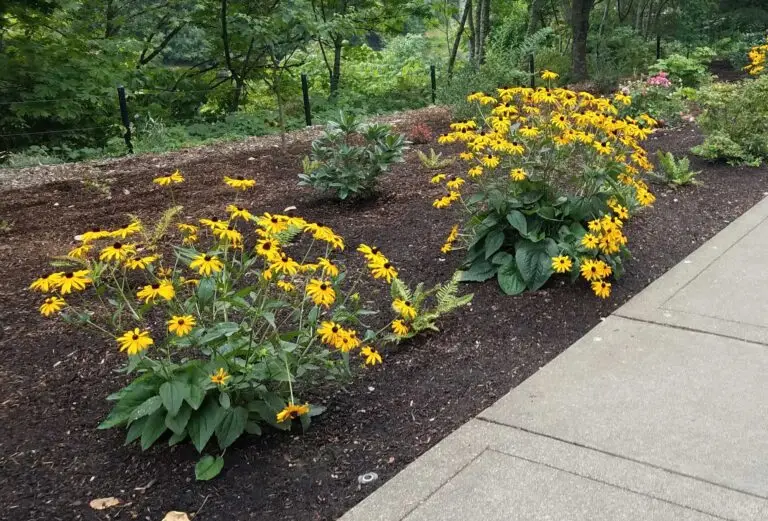
Add mulch around the plant
Mulch is a garden time saver. Adding mulch around the plant on top of the soil helps keep the water underground and near the roots—instead of evaporating in the sun. Mulch has the added benefit of smothering weed seeds, which helps save time weeding. It’s a win-win for our gardens.
One more note for those adding new plants:
Drought tolerance starts after a plant is “established”
A native plant is considered established when its roots and stems are strong enough to handle normal wind and dry spells. This usually takes about a year. Once established, many native plants have their specialized root systems in place—like taproots or corms—that help them survive drought with little or no watering.
That’s why consistent watering during the first year is so important. It gives your plant the best chance to thrive for years to come. For more tips, check out our guide to establishing native plants.
Where can I find dry-friendly native plants?
We’ve got you. Here are four tried-and-true (and trusted!) sources for finding natives:
Where can I find seeds and plants?
Finding native plants can be challenging (we partly blame Marie Antoinette.) To make it easier, we’ve assembled four sourcing ideas.
300+ native nurseries make finding one a breeze
Explore 100+ native-friendly eCommerce sites
Every state and province has a native plant society; find yours
Online Communities
Local Facebook groups are a great plant source
That sums up our guide to planting in dry areas. If you want to conserve water or plant in a dry spot, these native plants will thrive in the eastern half of the United States. Their DNA and thousands of years of experience living in North America give them the resiliency to withstand drought while helping conserve water. Planting native ensures our gardens look beautiful in our changing climate while providing homes and food for some of our most cherished animals, like butterflies, hummingbirds, and songbirds. Want to keep exploring? Visit our Beginner’s Guide to Native Milkweed or our Best Native Trees for Front Yards. Happy planting!
Sources
- Harstad, Carolyn. Go Native! Gardening with Native Plants and Wildflowers in the Lower Midwest. (1999), 209-210.
- LaVaute, Kelly. “Water-Wise Wildlife Gardens: What Are Drought-Tolerant Native Plants?” National Wildlife Federation, Garden for Wildlife, December 2023.
- Murgel, John. “Native, drought tolerant, invasive, and more: Making sense of ambiguous plant terms.” Colostate.edu, January 17, 2025.
- Schaefer, Louise. “Drought Tolerant Native Trees – Edge of the Woods Native Plant Nursery, LLC.” Edge Of The Woods Native Plant Nursery, LLC, July 2, 2024.
- Stokes, Donald, and Lillian. The Wildflower Book: East of the Rockies — A Complete Guide to Growing and Identifying Wildflowers. (1992), 24.
- Wade, G., Nash, E., McDowell, E., Beckham, B., & Crisafulli, S. (2021) Native plants for Georgia, part III: Wildflowers. UGA Cooperative Extension Bulletin 987-3.
- Nycgovparks.org. “Drought–Tolerant Species: Greenbelt Native Plant Center” NYC Parks, 2025.
